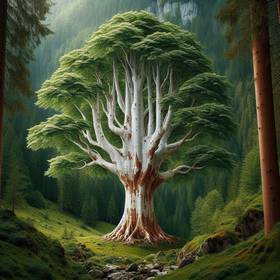The Sycamore's Distinctive Features
The Sycamore tree (Platanus occidentalis) is easily recognizable by its massive size, reaching heights of 75 to 100 feet with a wide, spreading canopy. Its bark is perhaps its most striking feature, shedding in large patches to reveal a mottled pattern of creamy white, gray, and brown. The leaves are large, deeply lobed, and resemble a hand with five fingers. The Sycamore produces small, ball-shaped fruits that hang from long stalks and eventually break apart to release numerous seeds.
Sycamore Tree Identification Guide
To confirm you're looking at a Sycamore, look for the following:
• Bark: The patchy, mottled bark is unique.
•Leaves: Large, deeply lobed leaves with 3-5 prominent lobes.
• Fruit: Small, ball-shaped fruits hanging from stalks.
• Habit: A large, spreading tree with a wide crown.
Distinguish the Sycamore from other trees like the American Elm by its more symmetrical leaf shape and larger size. The Sycamore's bark is also distinct from the Elm's, which is more fibrous and has a rougher texture.
• Bark: The patchy, mottled bark is unique.
•Leaves: Large, deeply lobed leaves with 3-5 prominent lobes.
• Fruit: Small, ball-shaped fruits hanging from stalks.
• Habit: A large, spreading tree with a wide crown.
Distinguish the Sycamore from other trees like the American Elm by its more symmetrical leaf shape and larger size. The Sycamore's bark is also distinct from the Elm's, which is more fibrous and has a rougher texture.
Where Do Sycamore Trees Thrive?
Sycamore trees are native to the eastern United States and are known for their adaptability. They prefer moist, well-drained soils and can tolerate a wide range of growing conditions, including full sun to partial shade. They thrive in urban environments and are often found along rivers, streams, and other waterways. However, their preference for moisture makes them susceptible to fungal diseases, particularly in areas with high humidity.



